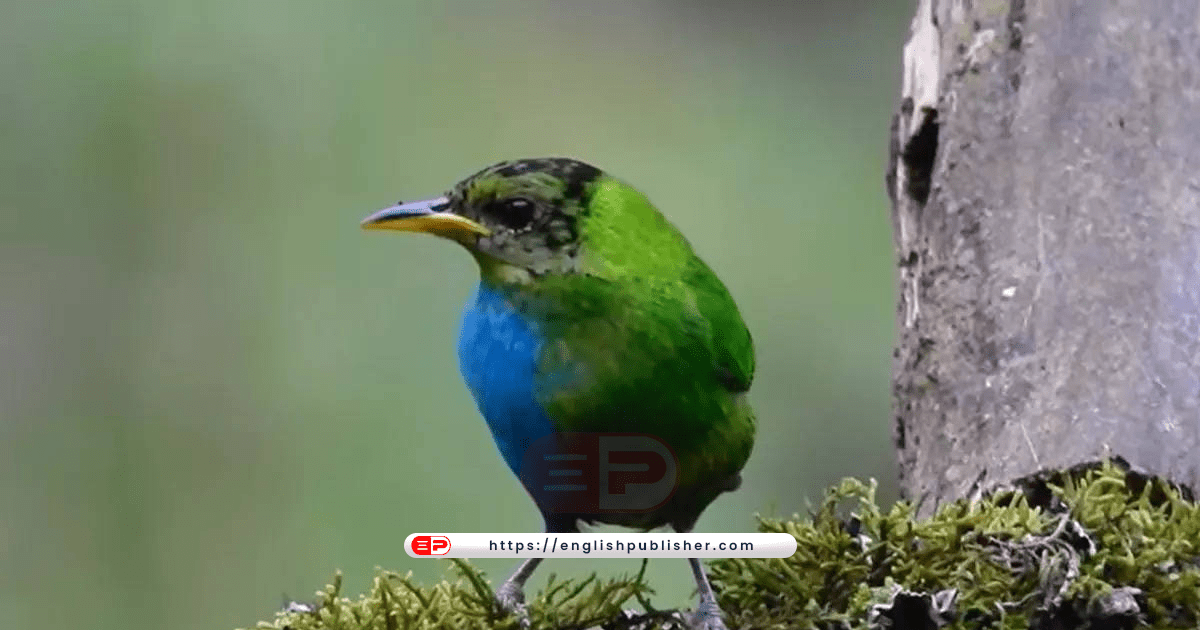A rare bird with both male and female features discovered in Colombia
A rare bird has been discovered in Colombia that combines the characteristics of both a male and a female. The discovery was made in Caldas, central Colombia, when ornithologist John Morillon saw a wild honeycreeper, or Chlorophynus spiza, in the Don Miguel Demonstrative Natural Reserve, 10 kilometers southwest of the city of Manizales, which immediately caught his attention. Lee.
A very unique thing about this bird was that its left side was green while the right side was blue. In the birds of this species, the color of the male is blue and the color of the female is green.
Hamish Spencer, professor and scientist at the Department of Zoology at the University of Otago in New Zealand, told BBC Mundo that it was “extremely interesting”. It is likely that most bird watchers will go their entire lives without seeing a gynandromorph (a bird that has both female and male characteristics), so I was privileged to benefit from John Morello’s discovery.
Hamish Spencer also saw the bird as he was also on holiday in Colombia at the time. He said this is a very rare thing. He never found such an example in New Zealand.
A rare feature
Gynandromorphy is a rare condition that causes an organism to have male characteristics on one side and female characteristics on the other.
Hamish Spencer has written about this in his article ‘Bilateral Gynandromorphy in a Green Honeykeeper (Chlorophanes spiza) from Colombia’ in the Journal of Field Ornithology.
Two different colors and male and female characteristics in the same organism are mostly seen in animals that have different male and female genitalia. This is the second example of a bird of this genus in over 100 years.
“Gynandromorphs are important to our understanding of sex determination and behavior in birds,” says James Spencer.
But what does this unique bird tell us about the animal world?
“Sexually dimorphic (different colors) in birds is due to the structure of chromosomes in nearby cells rather than any hormonal differences throughout the body,” he told BBC Mundo.
This condition has been found in insects, especially butterflies, crabs, spiders, lizards and mice.
“This particular example of bilateral gynandromorphy (male and female characteristics) shows that birds of many other genera can be either male or female,” says Professor Hamish.
The phenomenon, the researcher pointed out, “is caused by a mistake in the male during cell division to produce an egg, which then results in double reproduction by two spermatozoa.”
21 month observation
The Don Miguel Demonstrative Natural Reserve is a large farm with a small forest and bird feeders. In this farm they are fed fresh fruits and fresh water so this place is great for bird watching.
In a research paper published on the bird’s characteristics, the authors write that ‘at bird feeders you can often see several tenejas, as well as orioles, thrushes and euphonias. .’
But the bird that caught their attention ‘stayed here for 21 months and behaved much like other wild chlorophenes speza, but often waited for people to leave, after which it was hunted by the farm’s owners. The fresh fruits kept for him were eaten.’
There was a time when he would not allow any other bird of his species to come near his territory i.e. feeding places. Why he did this, researchers don’t have an answer.
He mostly stayed away from his own kind of birds and others also stayed away from him. So it doesn’t feel like it got a chance to breed.”
The fact is that whether or not he has offspring, he has left his mark on the world of birds forever.
